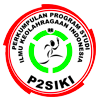A Review Of The Literature On Sensor-Based Dynamic Balance Tools For Postural Stability Control
Abstract
Equilibrium is the capacity to hold a position within the bounds of support or stability. It is demonstrated that the posture control system is crucial for preserving balance on a small support base. The intricate process makes it challenging to evaluate balancing capacities succinctly and completely. By examining numerous studies that evaluate postural balance using a variety of mechanical tools and offering a thorough summary of popular mechanical tools for this purpose, this study expands on earlier research. Finding the appropriate activity and equipment to regulate postural stability is the aim of this review. We used VOSviewer, a tool for analyzing bibliometrics from the Scopus database from Elsevier and Google Scholar, to conduct an electronic search across several prestigious journals. 154 relevant items were found after a literature search. A more thorough analysis reveals that the chosen literature solely discusses mechanical instruments for assessing static and dynamic balance. Only 12 articles from the evaluation satisfied the requirements. Four publications inertial balance sensors, Biodex Balance Systems, force plates, and 3D Joint Kinematic sensors are directly related to sensor-based dynamic tools for postural stability control, according to the search results. This sensor-based dynamic balance tool is a useful tool for teaching and assessing postural stability in a variety of contexts, including medical rehabilitation.
Downloads
References
Kharbat AF, Ha FLX, Zumwalt M, Robert-McComb JJ. The Importance of Posture and Muscular Balance in the Body for Managing Skeletal Muscle Injuries in Active Females. In: The Active Female: Health Issues throughout the Lifespan. Springer; 2023. p. 211–28.
Ilg W, Milne S, Schmitz-Hübsch T, Alcock L, Beichert L, Bertini E, et al. Quantitative gait and balance outcomes for ataxia trials: consensus recommendations by the ataxia global initiative working group on digital-motor biomarkers. The Cerebellum. 2024;23(4):1566–92.
Lyon MF, Mitchell K, Roddey T, Medley A, Gleeson P. Keeping it all in balance: a qualitative analysis of the role of balance outcome measurement in physical therapist decision-making and patient outcomes. Disabil Rehabil. 2023;45(19):3099–107.
Mahoney J. Subjective well-being measurement: Current practice and new frontiers. 2023;
Buckley C, Alcock L, McArdle R, Rehman RZU, Del Din S, Mazzà C, et al. The role of movement analysis in diagnosing and monitoring neurodegenerative conditions: Insights from gait and postural control. Brain Sci. 2019;9(2):34.
Neville C, Ludlow C, Rieger B. Measuring postural stability with an inertial sensor: validity and sensitivity. Med Devices Evid Res. 2015;447–55.
Ancillao A, Tedesco S, Barton J, O’Flynn B. Indirect measurement of ground reaction forces and moments by means of wearable inertial sensors: A systematic review. Sensors. 2018;18(8):2564.
Ihsan N, Yulkifli Y, Hadi A, Yohandri Y, Mario DT, Ayubi N, et al. Sensor-based scoring system for the fighting category in Pencak Silat. Retos nuevas tendencias en Educ física, Deport y recreación. 2024;(57):684–91.
Azali FA. Postural Stability and Risk of Fall of Person with Trilateral Prosthesis. University of Malaya (Malaysia); 2019.
Handayani SG, Myori DE, Komaini A, Mario DT. Android-based gymnastics learning media to improve handstand skills in junior high school students. 2023;
Wang H, Du L, Sun Z. Optimization design of conical reaction teeth of shear wave vibroseis vibration plate. Glob Geol. 2023;26(4):264–72.
Santos VM, Gomes BB, Neto MA, Amaro AM. A Systematic Review of Insole Sensor Technology: Recent Studies and Future Directions. Appl Sci. 2024;14(14):6085.
Pranoto NW, Chaeroni A, Rifki MS, Ilham A, Susanto N. The effects of inactivity during the COVID-19 pandemic on the psychomotor skills of kindergarten students. Ann Appl Sport Sci. 2023;11(2):0.
Alimuddin A, Nazri SBM, Liza L, Pebriyani D, Muchlis AP. Physical education and sport essential as transversality and body integration in the learning process: A systematic review. Retos nuevas tendencias en Educ física, Deport y recreación. 2024;(58):20–7.









